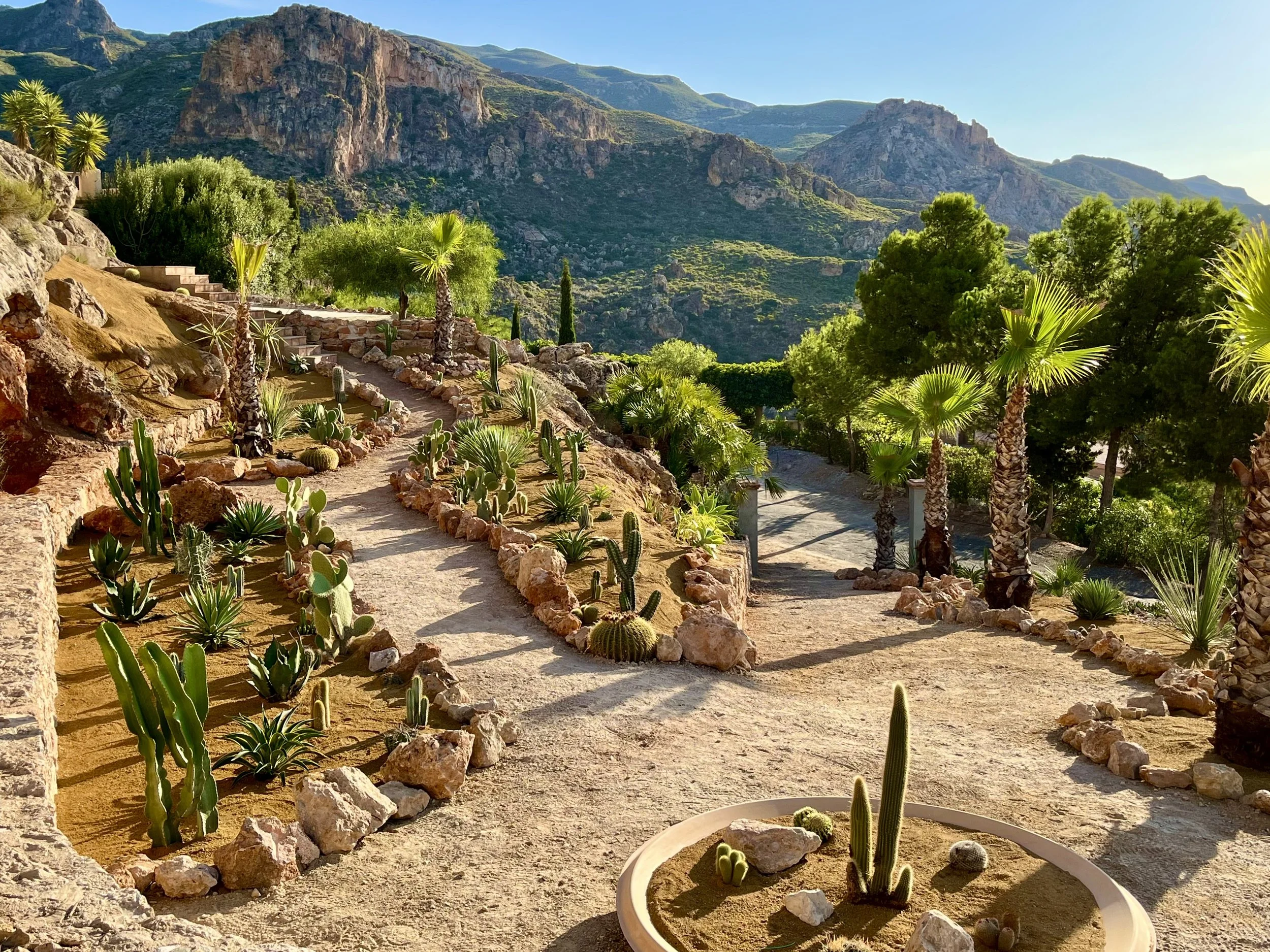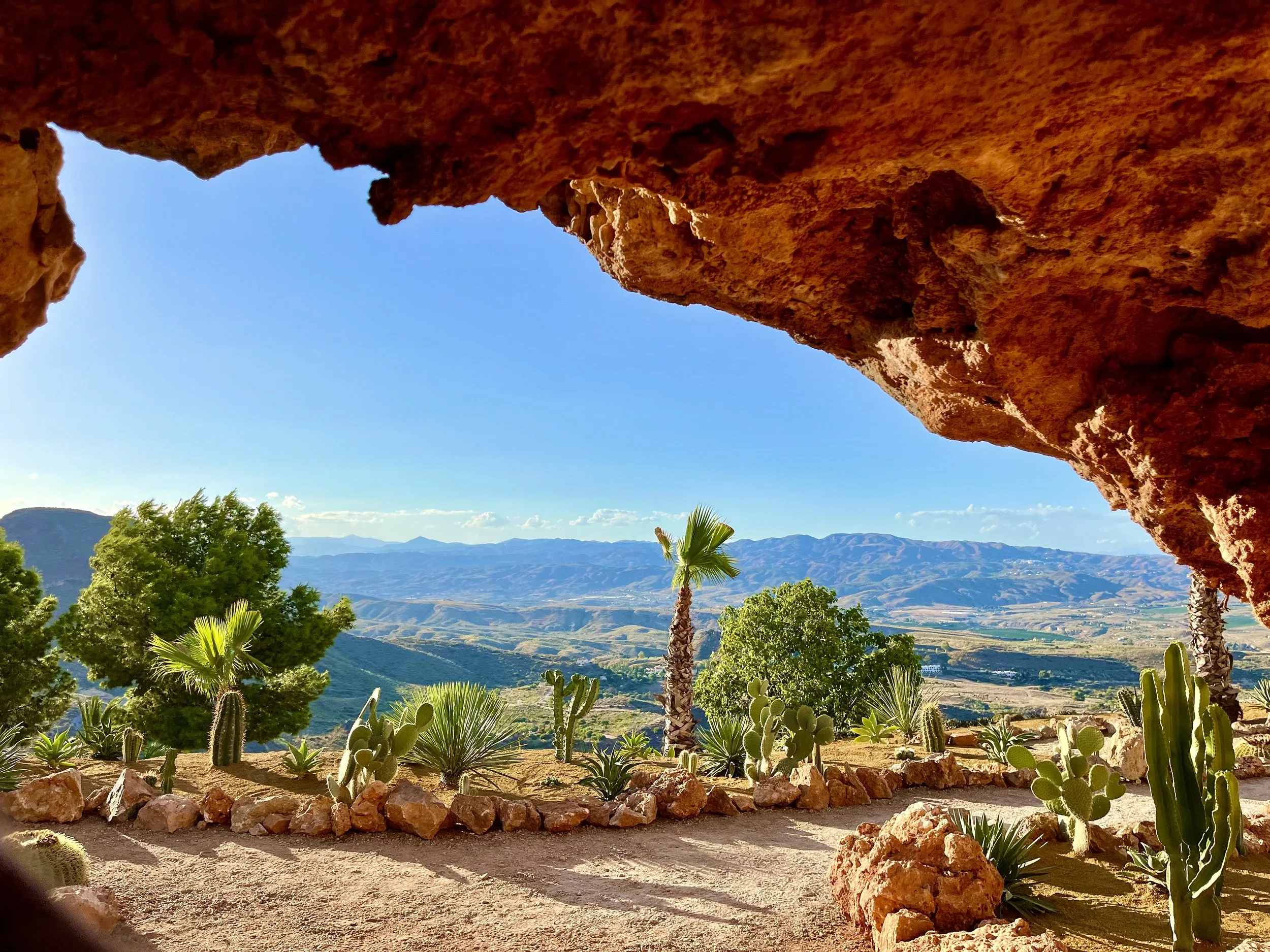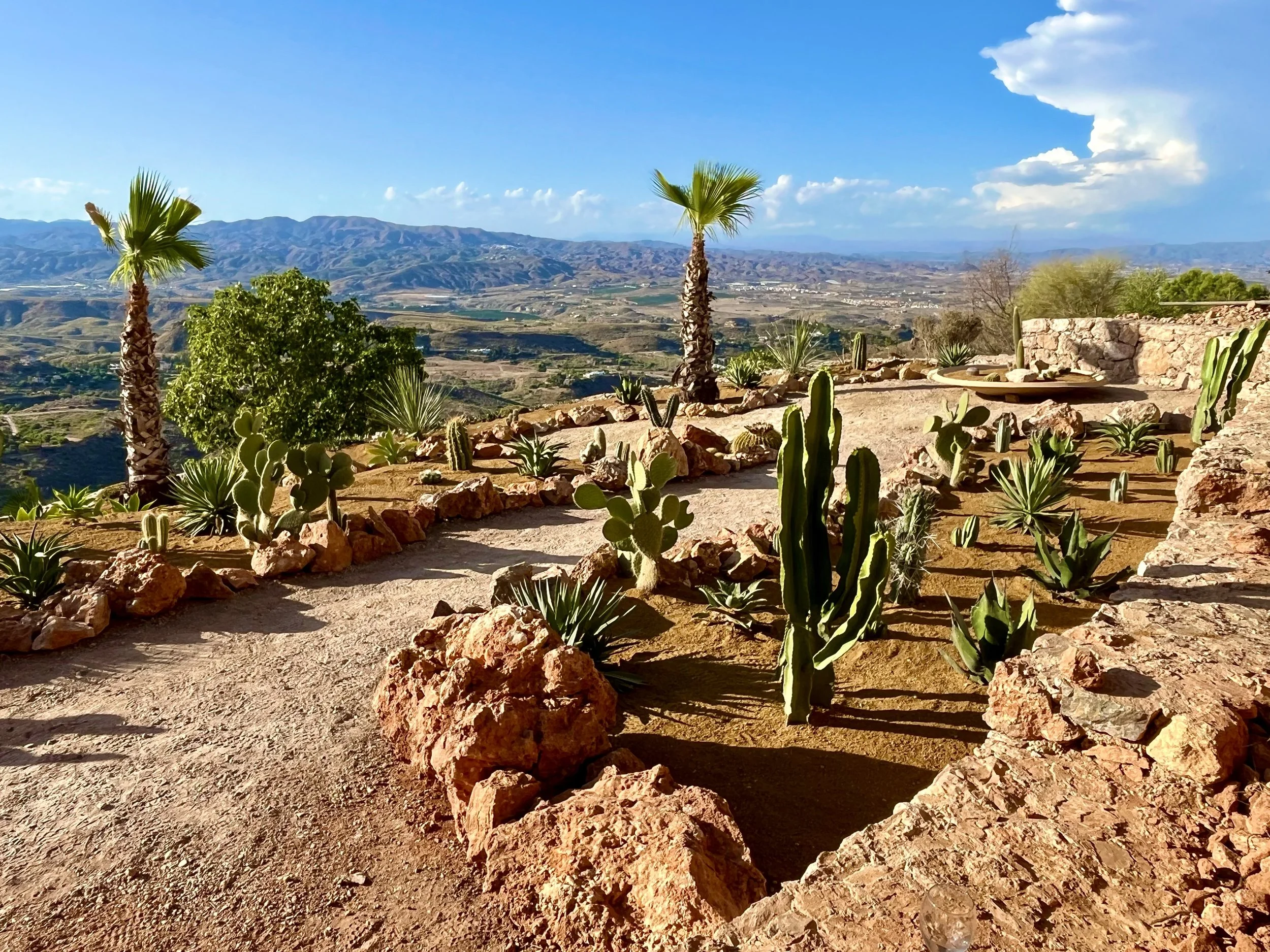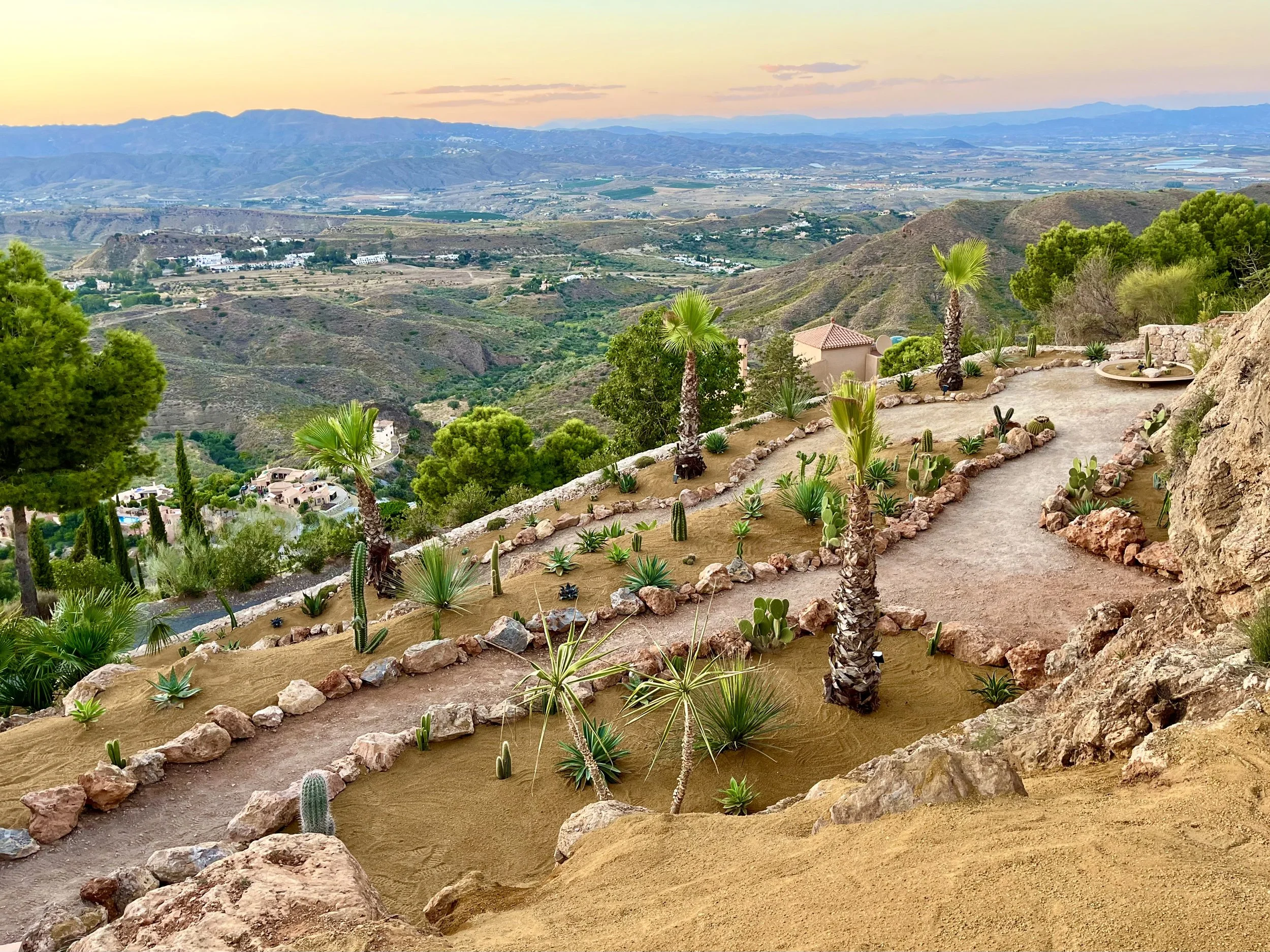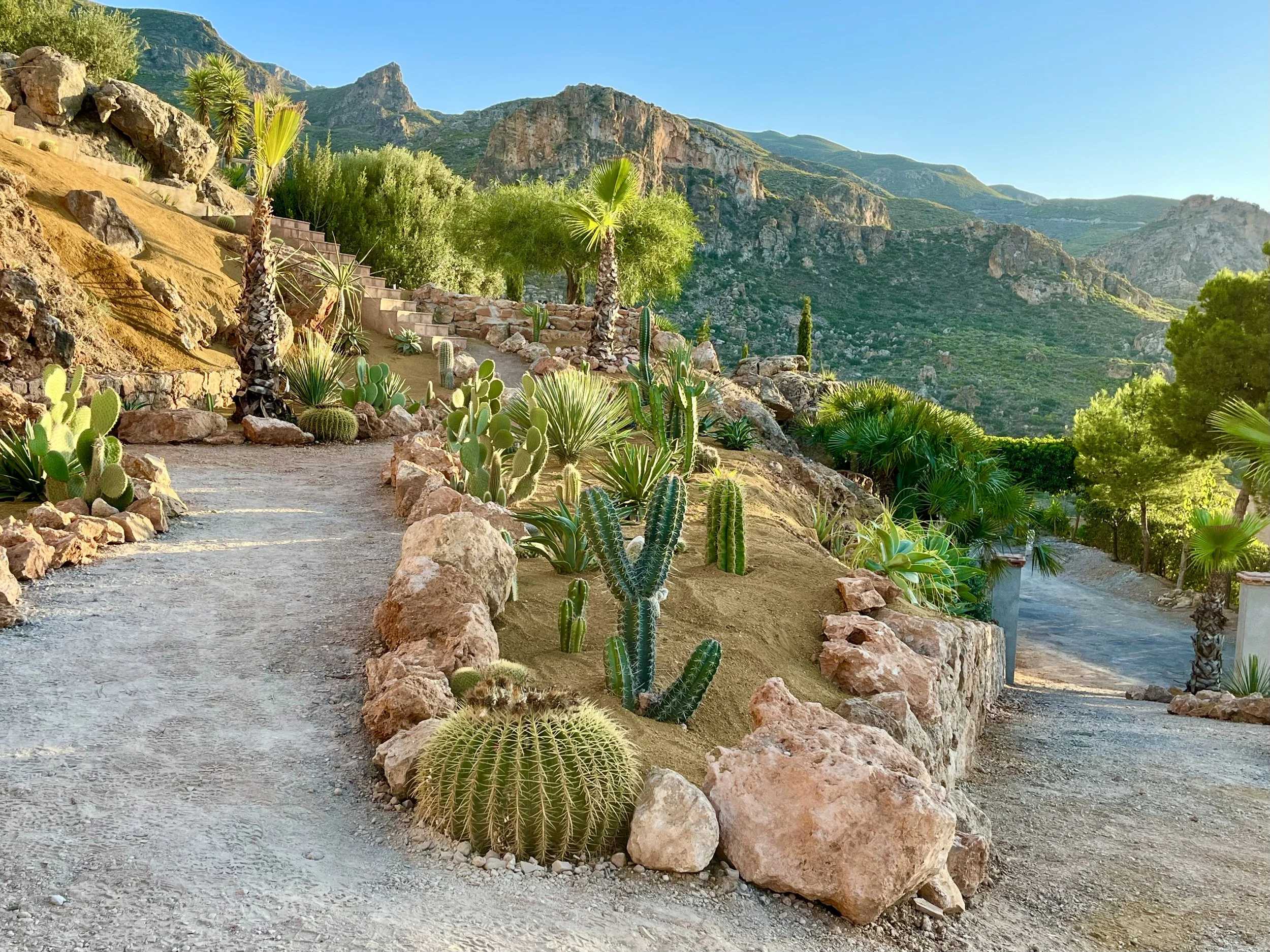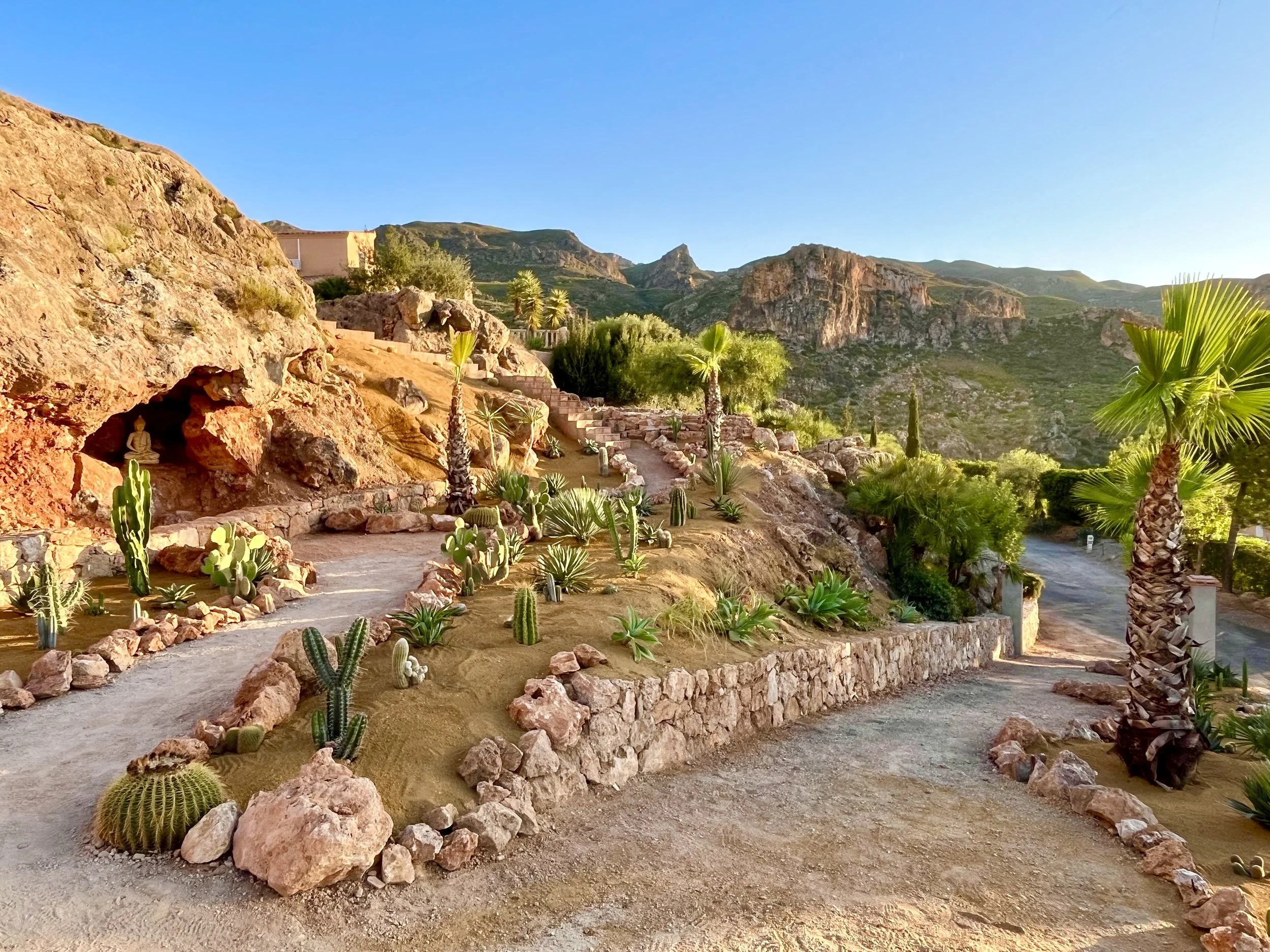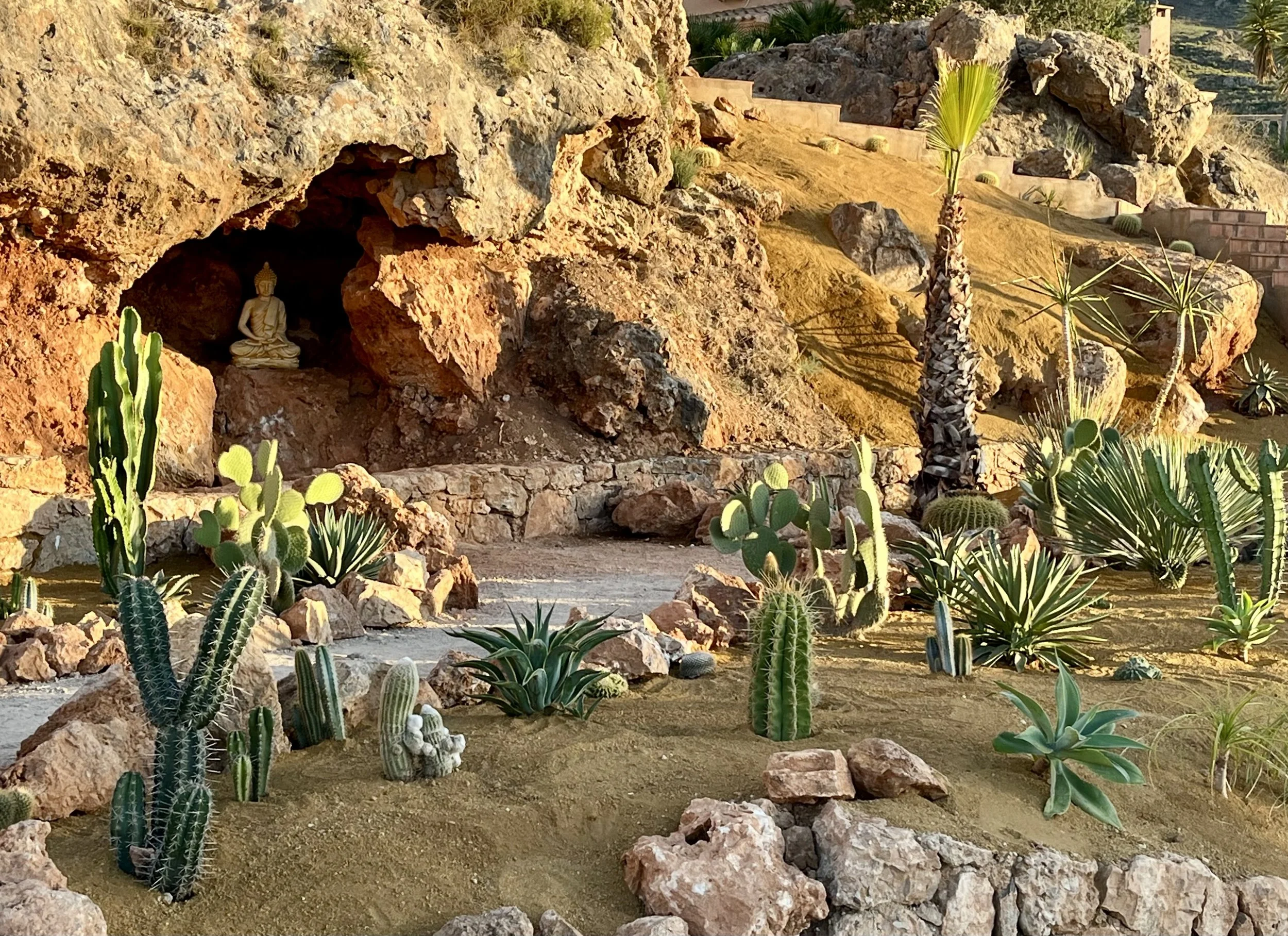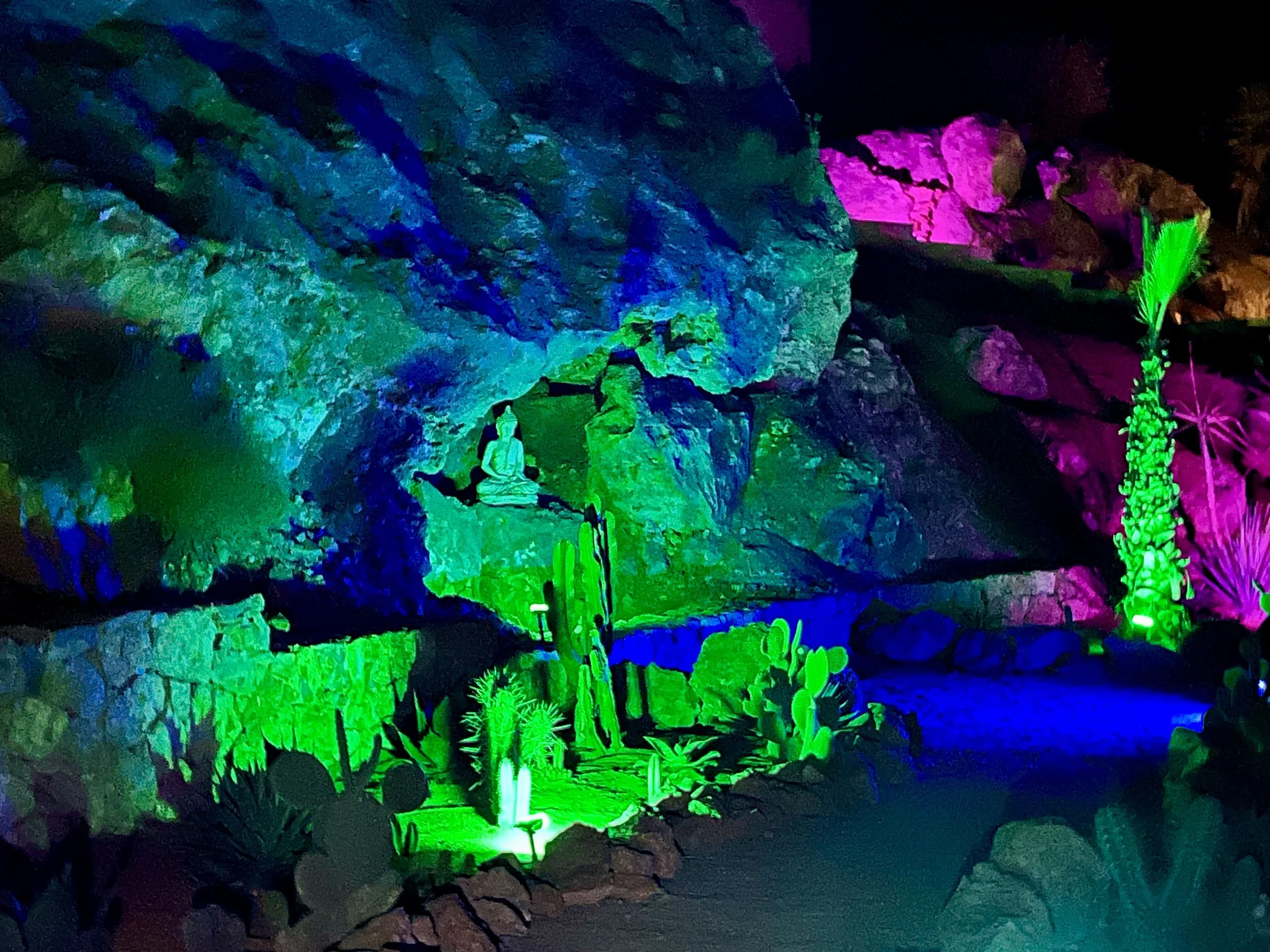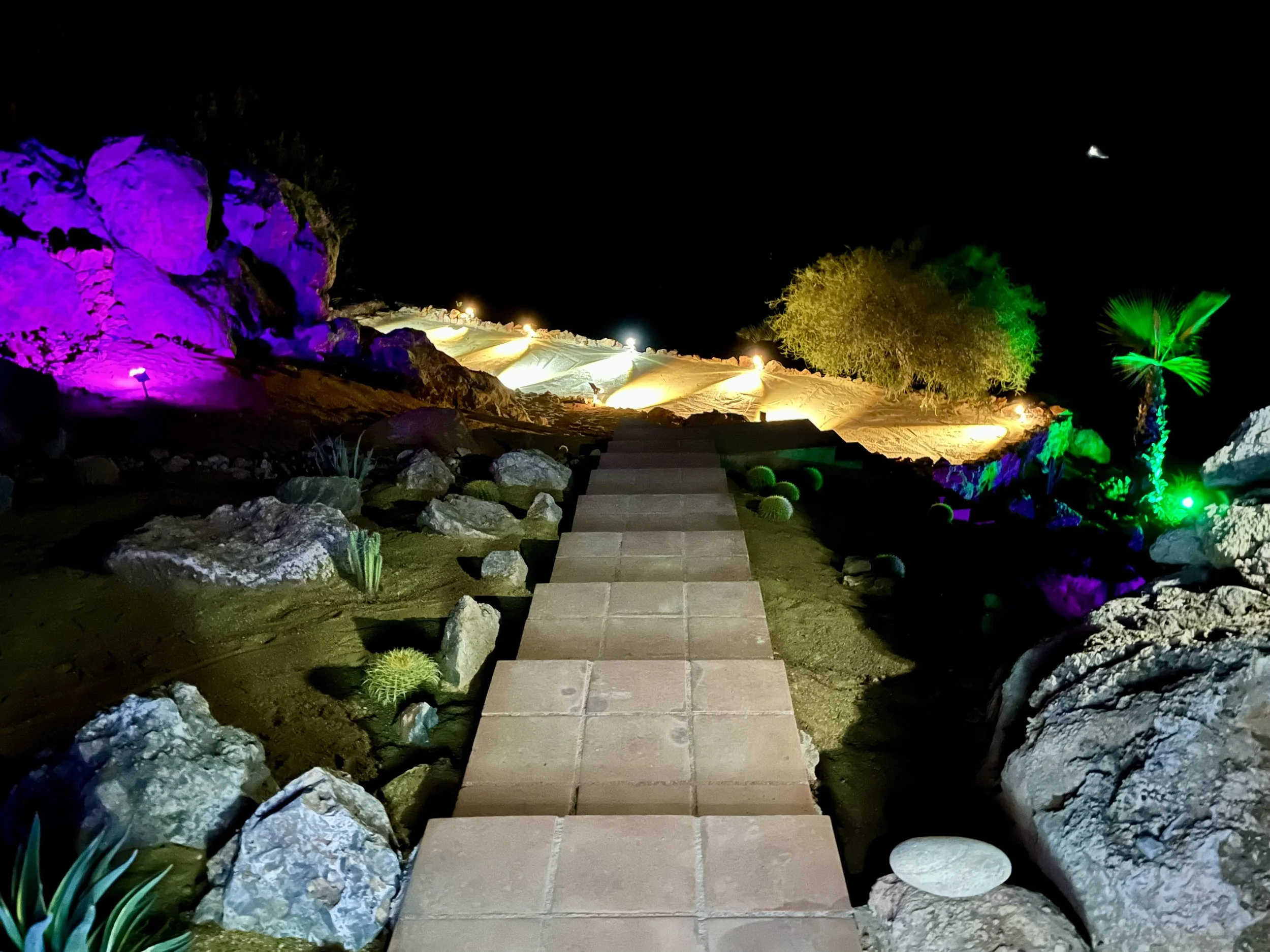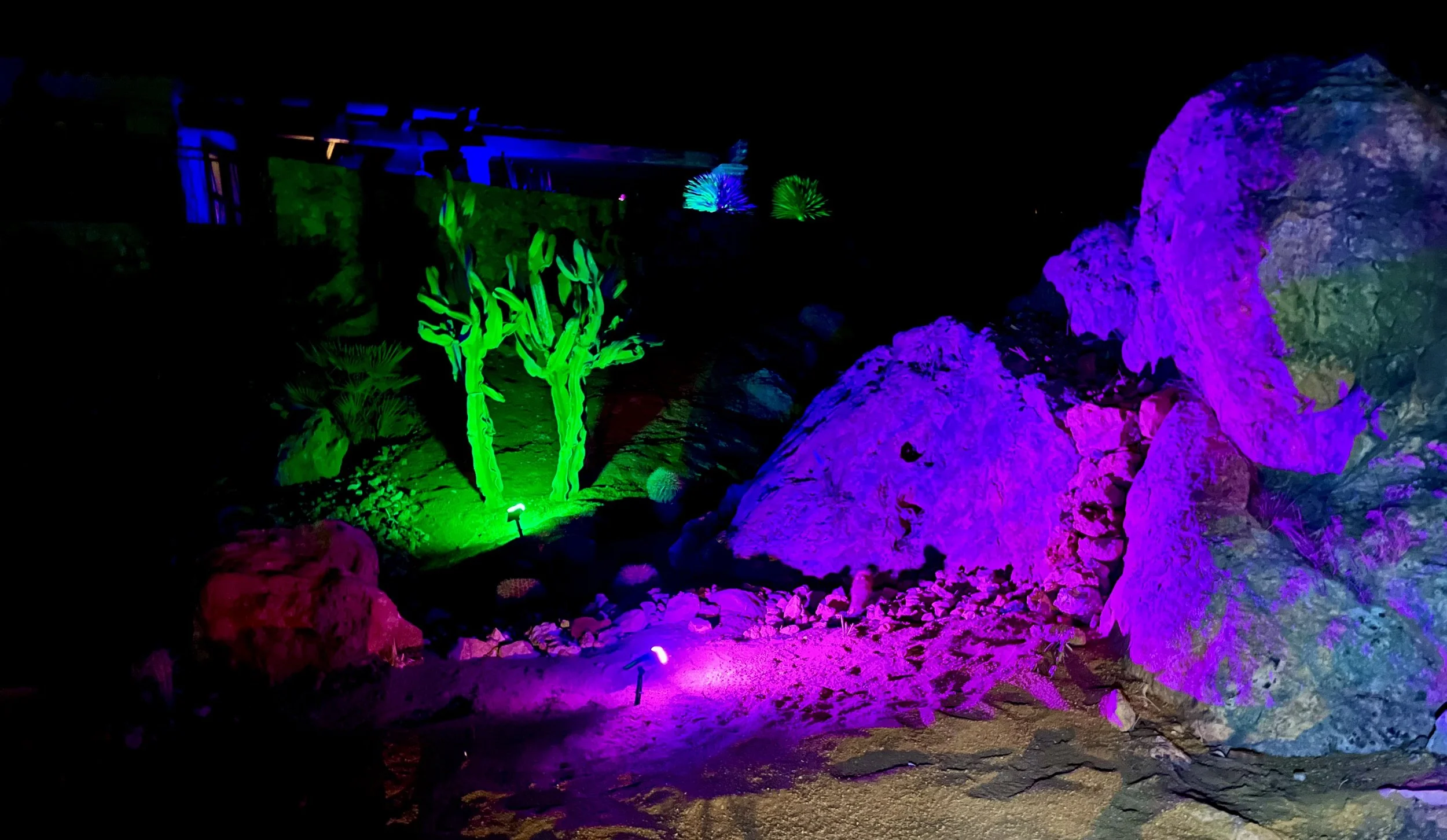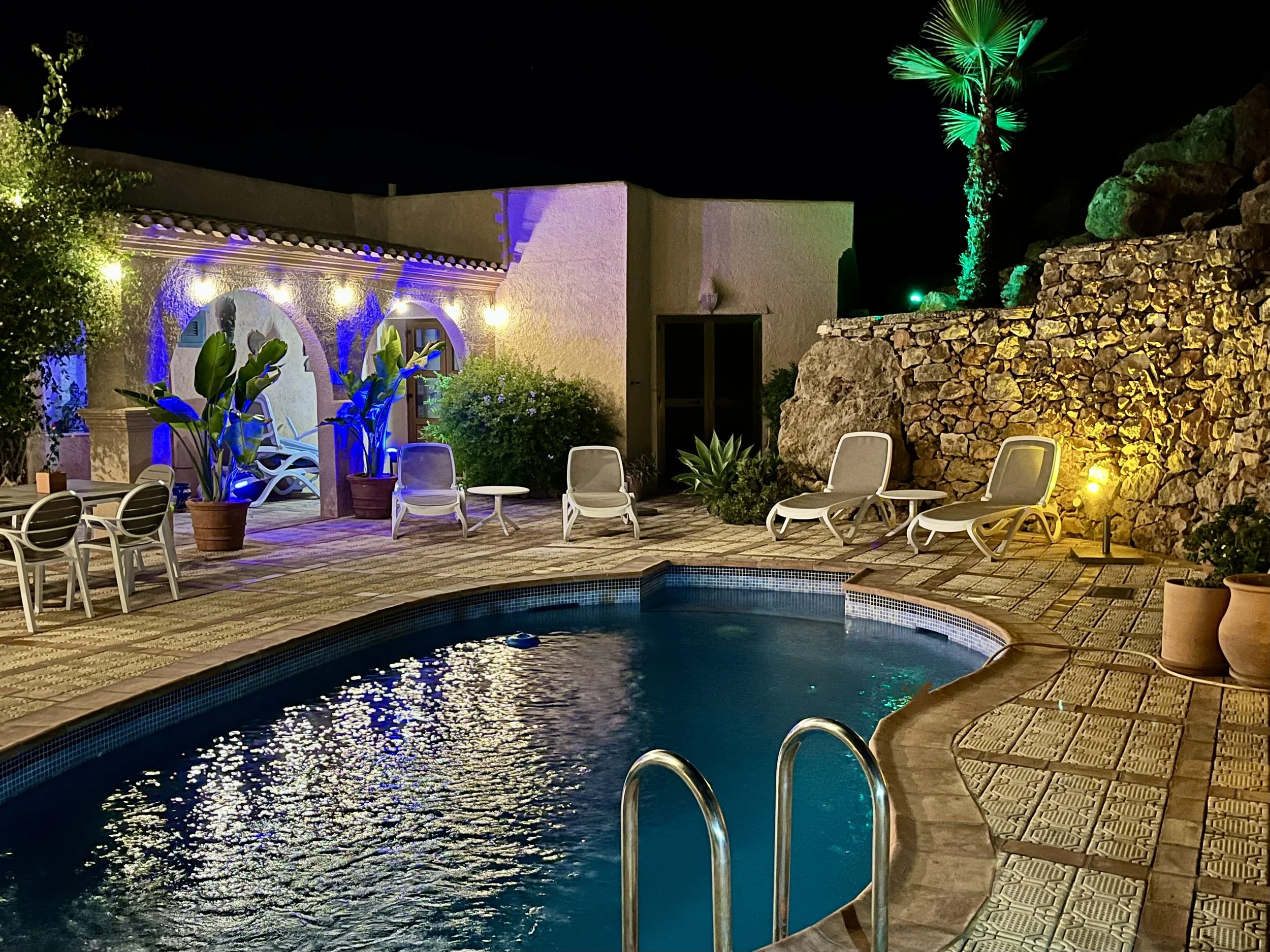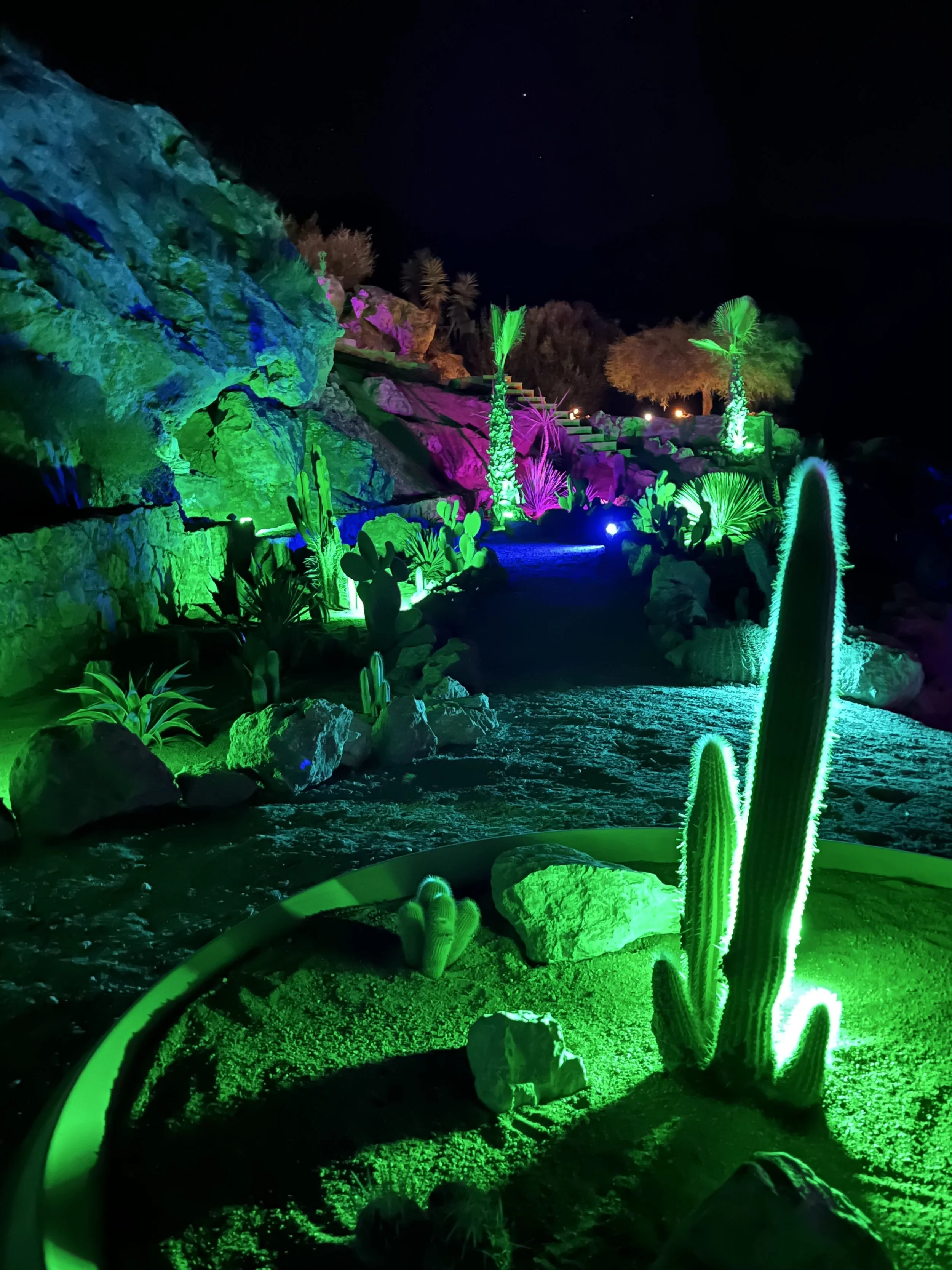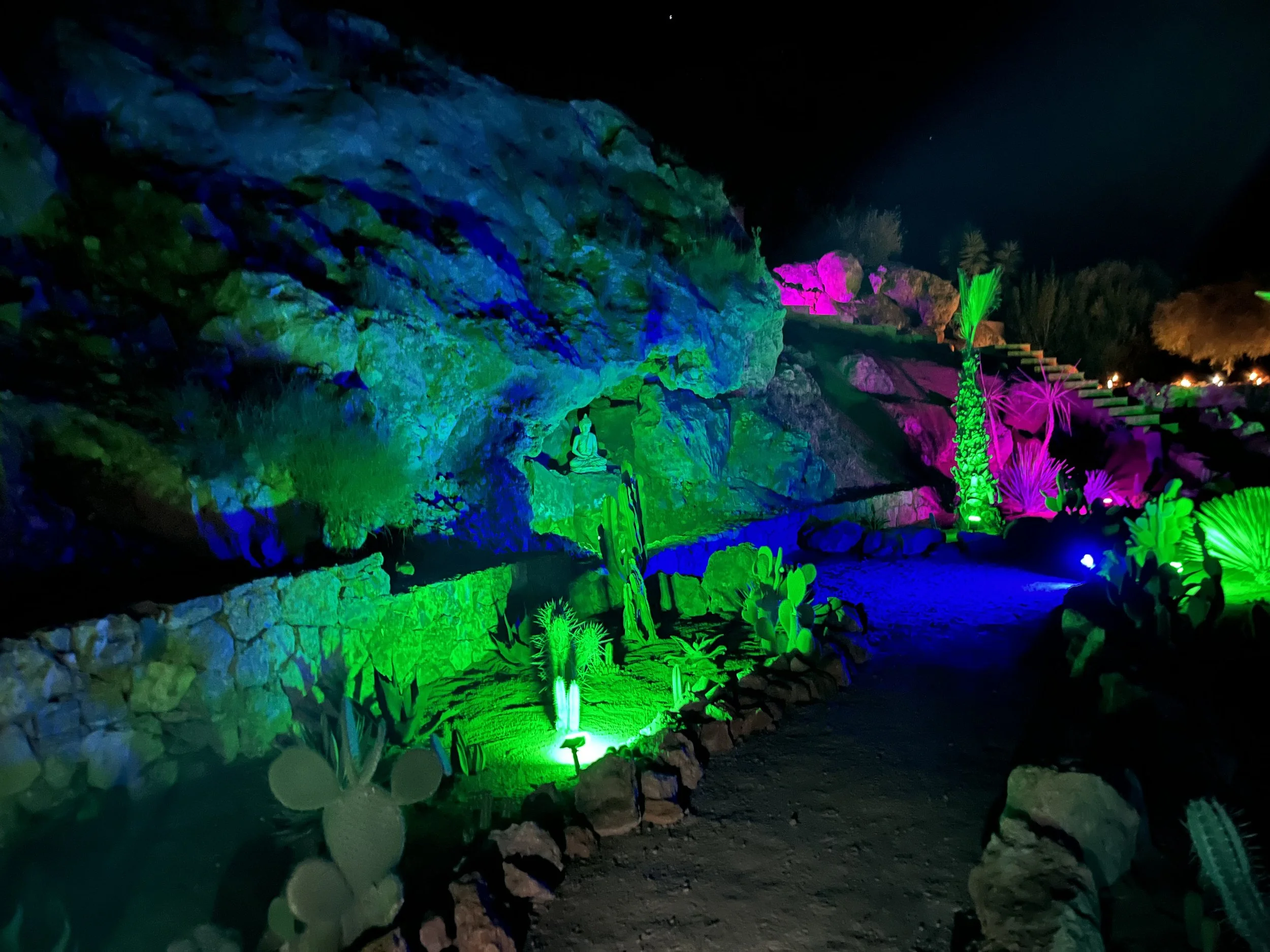Welcome to the newest addition to Casa Mary Jo: the Zen Cactus Garden, created in memory of Douglas Farrar.
Transforming what was once a sheer, landslide-prone surface of gorse, uneven soil, and loose boulders has been no mean feat. But now, almost three years later, the Sierra Cabrera has a new landmark - the Zen Cactus Garden designed by Pauline Farrar.
Originally the land in front of Casa Mary Jo was purchased as a building plot. But after local planning regulations changed, the site was deemed too small for development and left abandoned. By then Doug had carved a stairway down the mountainside—steep terracotta steps winding between Jurassic boulders—only to stop mid-slope, facing an impenetrable wall of gorse.
Thirty years later, Doug’s daughter-in-law, Pauline Farrar—an environmental artist and garden designer known for her work with succulents—took up the challenge. Her vision was to extend Doug’s original path all the way down to the road at Ave Avenjour. But the site posed serious challenges.
At 350 metres above sea level, the terrain was steep and uneven, with loose soil and boulders prone to landslides. Water on the mountain is a precious resource, not to be squandered on ornamental gardens. Our first task was to stabilise the slope and prevent further erosion. The second was to create a xeriscaped garden—one that could thrive with little to no irrigation.
Designing the garden took two years. We waited patiently for the gorse to be cleared, week by week, revealing the contours and character of the land beneath. Using only stone sourced onsite and an old satellite dish, Pauline created several garden features including a grotto and pétanque court.
The backbone of the garden is a diverse collection of locally sourced cactus and succulent plants—chosen not only for their sculptural beauty, but for their resilience in the dry, demanding conditions of the Sierra Cabrera. These low-maintenance species are perfectly suited to the Mediterranean climate, requiring minimal water while offering year-round interest. From spiky opuntia to fleshy aeoniums, each plant helps stabilise the soil and soften the rugged terrain.
As you wander along the terracotta-tiled pathways, you’ll encounter tiny flowering cactuses, hearty golden barrels, towering yuccas, and palms that weigh up to four tonnes.
But the real challenge lay in the slope. With a 1-in-6 gradient dropping 24 metres from the terrace to the road erosion was a constant threat. To combat this we built seven retaining walls to hold back the soil. On the steepest sections, we installed geo cell—a tough, honeycomb-like nylon grid anchored with rebar stakes. Once secured, we filled the pockets with gravel, creating a permeable barrier that stabilises the slope while allowing rainwater to filter through. It’s not glamorous but it’s effective—and now hidden beneath golden gravel and a growing tapestry of drought-tolerant greenery.
This garden is more than a landscape project—it’s a living tribute to Doug’s vision, perseverance and love for the Sierra Cabrera. It’s a quiet place of memory and renewal, where the wildness of the mountain meets the calm of intention. For our family the Zen Cactus Garden is not just a destination—it’s a story written in stone, soil, and sunlight.
